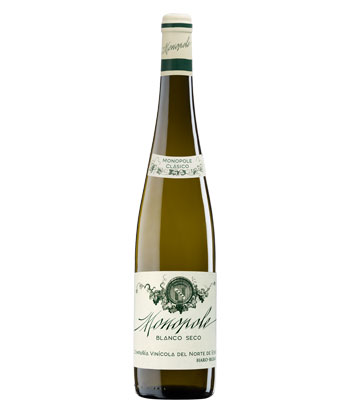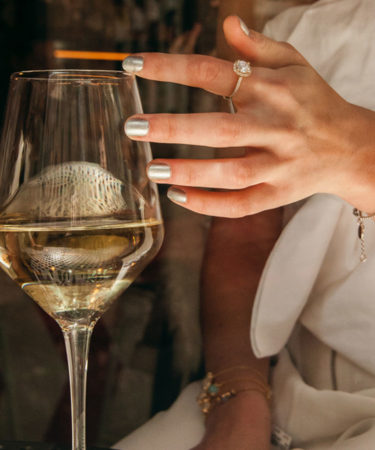When VinePair included CVNE’s 2014 Monopole Clasico in our 50 Best wines of 2018, we described the white Rioja as a “unicorn” of a wine. And we didn’t use the descriptor lightly. The bone-dry, savory blend truly is one of a kind, both in terms of its flavor and unique elaboration.
Pronounced “coo-nay,” and an abbreviation of Compañía Vinícola del Norte de España, CVNE is a northern Spanish wine company founded in 1879. Nowadays, the company owns and runs four wineries throughout the country, one of which — the original — is also called CVNE (the others are Imperial, Viña Real, and Contino).
CVNE launched its Monopole wine in 1915. At the time, growing conditions in Spain were cooler than they are now, and it wasn’t uncommon for the region’s grapes to be harvested with much lower sugar levels, and therefore lower alcoholic potential.
To give structure and backbone, CVNE added manzanilla sherry to the white Rioja, and the two wines spent time in oak to ensure harmonious blending. The fortified dry wine was complex, with nutty, saline notes combined with the crisp, green-fruit flavor of Viura grapes. The wine was a success with Spanish drinkers.
Because Spain is an Old World region, the winery was subject to appellation laws. Based in Rioja, CVNE had to request permission from the appellation’s regulatory board before it could release a white blend that included fortified wine.
“We still have the letters authorizing us to bring in the [sherry],” CVNE’s chief executive Victor Urrutia writes VinePair in an email. “There’s no way we’d get this approval nowadays.”
Monopole remained popular in Spain until the 1980s, when a growing trend for refreshing, fruit-driven whites eclipsed the savory, complex Clasico.

“The wine had a lengthy barrel aging in old oak, and a profile contrary to the modern, fruity whites made mostly everywhere nowadays,” Urrutia writes. “We stopped making [it] as it became hopelessly unfashionable.”
The one-of-a-kind white blend may have been resigned to history, were it not for an American journalist’s visit to the company’s Haro winery in 2012. “What about that old style?” the writer asked.
The winery searched for old-style Monopole and found just one, solitary bottle from 1979.
“The wine was savory, very fresh, balanced, delicious,” Urrutia says. “On the spot, the decision was made: We would make this wine again, as it had been made historically.”
The winery enlisted the services of Ezequiel Garcia, CVNE’s winemaker from the ‘40s to ‘70s. Working with chief winemaker Maria Larrea, Garcia helped recreate the wine in its original style.
Viura grapes for Monopole Clasico are hand-harvested, gently pressed, and then fermented in stainless steel tanks. After fermentation, the wine ages on its lees in used 300- and 500-liter sherry butts. The blending with sherry takes place at this point, and it is aged around a year before bottling.
CVNE released the 2014 vintage — the first example of the revived Monopole Clasico — in 2017. “Spaniards are happy to see an old favorite back,” Urrutia says, while “wine people are loving it worldwide, from Tokyo to New York.”
Like Alpha Romeos to petrolheads, or jazz to music lovers, enjoying sherry is a key part of being accepted in the wine community as a bona fide oenophile. Though highly versatile, the style is complex and challenging. CVNES’s Monopole Clasico offers the perfect gateway to sherry, and is an affordable alternative to other age-worthy white blends.
CVNE, for one, is well aware of the fickle nature of wine trends. “Nowadays we make it in much smaller quantities,” Urrutia says, “to best ignore the whims of fashion.”
